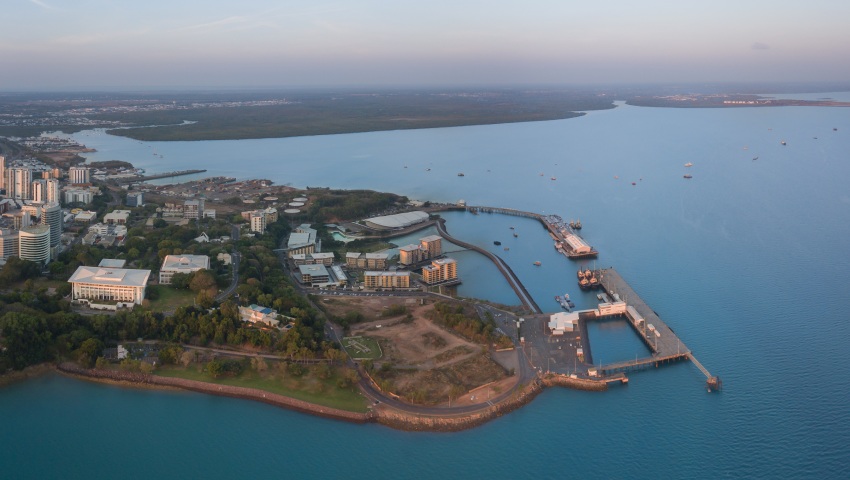Opinion: ASPI’s Dr John Coyne discusses the defence estate challenge in northern Australia, urging new thinking on how to approach key infrastructure management in the top end.
To continue reading the rest of this article, please log in.
Create free account to get unlimited news articles and more!
Since the late eighties, the Australian government has invested billions of dollars in bases and bare base infrastructure in the north, focusing on the Northern Territory. The 2020 Defence Strategic Update and the 2022 budget include further commitments to big spending on infrastructure projects. New thinking is needed if this investment is to deliver additional enhancements to Australia’s safe, sustainable and fit-for-purpose northern defence estate.
Earlier this month, Stephanie Males and Nick Tate made an effort to provide just that with their Defence Connect contribution: Solving northern Australia’s defence infrastructure challenges.
Males and Tate hit the nail when they stated, “delivering infrastructure in the Northern Territory is a very different mission than delivering projects of similar scale elsewhere”. Like so many Defence officials over the last four decades, they highlighted transport, cost, environmental and workforce issues as “facts of life” that bring infrastructure challenges. Of course, they’re right in making these observations about the facts of life in Northern Australia.
However, Males and Tate didn’t sufficiently contextualise their observations, choosing instead to once more highlight that the north is “hard”. At the same time, both omit the fact that every large infrastructure project faces a diverse set of dynamic and, more often than not, unique problems.
Technical and COVID-19 issues delayed the $3 billion NorthConnex toll road in Sydney by a year. Yet no one laments the unique challenges of moving equipment through Sydney’s traffic-jammed roads as an insurmountable. Instead, the owners of these projects view such problems as another layer of complexity in project planning and delivery.
In Adelaide, the planned 10.5 kilometres Torrens to Darlington Project will face an equally diverse and wicked set of engineering and management challenges. Yet, for obvious reasons, no one will present an argument that cost or technical efficiencies mean the Torrens to Darlington Project should move to Melbourne or Sydney.
Building more of Australia’s safe and sustainable defence estate in Australia’s southern states near population centres may be easier and cheaper. However, the current strategic environment demands that the Australian Defence Force be able to make better use of strategic geography within shorter time frames. These “facts of life” require the further development of defence estate in Australia’s north.
In Australia, the “facts of life” are that every large infrastructure project faces unique challenges and conditions. However, the “uniquely complex” mindset perpetually hampers Defence projects considered and undertaken in Australia’s North. Unfortunately, collaboration alone will not shift thinking around the long-held belief that “it’s too hard” in the north.
Inpex’s Ichthys LNG project in Northern Australia is ranked among the world’s most significant oil and gas projects. During peak construction, it employed 2,700 unskilled, semi-skilled and highly skilled workers. If Inpex found suitably qualified and experienced personnel, then defence ought to be able to.
Males and Tate are also right about the need for collaboration across all levels of government. This collaboration is, of course, a lofty goal. The defence organisation is monolithic, and its size and complexity often result in siloed decisions and communication. The problem is both a political challenge and a bureaucratic one when it comes to cross-portfolio collaboration. There are few prizes in Canberra for inter-portfolio collaboration. Here, there is some argument for an office for Northern Coordination, at least for the Defence organisation.
The economy in northern Australia doesn’t have a surplus of capability that’s just waiting for a Defence decision. Defence needs to plan and communicate its plans to the private sector differently.
Males and Tate’s closing focus on a citizen-centred and place-based solution underpinned by data is a robust playbook. This approach can only work by adopting a new Defence mindset that doesn’t start with a preconceived perspective focused on the existence of near-impossible problems. Instead, start with an understanding that the north’s economy is different from that of the south.
Dr John Coyne is the head of the Northern Australia Strategic Policy Centre and head of Strategic Policing and Law Enforcement at the Australian Strategic Policy Institute (ASPI).

 Login
Login







